Chuck Madurski
A surprising—albeit subtle—variety of fixed polymer buttstocks were used on early AR-15/M16-series rifles. There are five basic types, although it does not appear that these ever received unique manufacturer’s designations. Collectors today know them as the Type A through Type E. These stocks were fitted to the Colt Models 601 through 604, and later rifles.

The Colt 601 was fitted with both Type A and Type B stocks. These are seen in either their unfinished state—a red-brown colour with visible mottling caused by the bulk filler material in the resin—or finished with either a green or black paint. As with the later Types C and D, these were foam-filled for rigidity, and featured a rubber butt-pad and a sling swivel that pivoted on a split pin. On the earliest Type A stocks, the sling swivel could fully rotate, however these were quickly changed to the more common split pin and are rare today.
The Type A is primarily differentiated from the Type B by the profile of the curve in the underside of the stock. Whilst the Types B through E have the same general shape, the Type A had a very short, straight horizontal section at the lower side of the wrist of the stock, which transitions with a relatively sharp curve before following a straight line to the toe of the stock. All later Types examined herein have a different contour; the initial departure from the receiver is longer, and at an angle, with a shallower turn towards the toe. It is easy to miss this difference unless one can see them side-by-side (see Figure 1.2). The author would speculate that the stock change was an engineering decision, motivated by the weak point evident at the wrist of the stock in the Type A design. When used to fire rifle grenades, or perhaps even in hand-to-hand combat as an impact weapon, it is easy to imagine a sharp blow to the rifle resulting in a breakage.

Mainly fitted to the Colt 602, the Type C buttstock was the final Type made using the early manufacturing methods and materials, differing from the Type B only in colour. Instead of a reddish-brown resin (typically painted, or sometimes dyed, black), the Type C was produced with a black polymer from the outset. Mottling from filler material is sometimes still present. The easiest way to identify a Type C stock from its successors is to check for a foam vent hole in the locating tab (see Figure 1.3). This tab prevents the rotation of the stock once fitted to a lower receiver. Whilst the foam vent hole is also present on the located tabs of the Types A and B, those can be distinguished by their shape (A) and material (A & B), as noted previously.
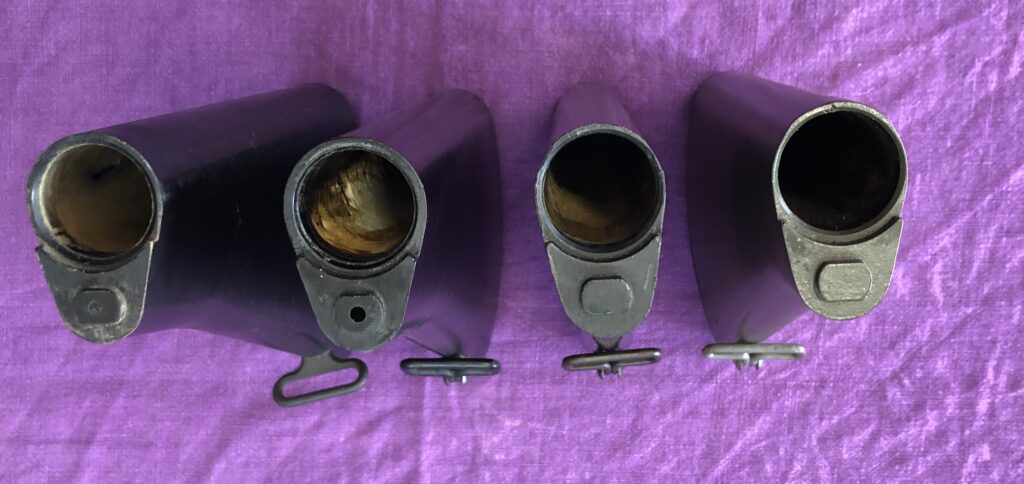
The Type D buttstock followed the pattern of the Type C, but incorporated changes to manufacturing techniques and materials to improve durability. It is noticeably heavier than the prior Types, and is the pattern used on U.S. Air Force M16 rifles (Colt 604), and early M16E1 rifles (Colt 603) as used by the U.S. Army. Finally, the Type E stock is essentially the same as the Type D except the butt-pad was made from a hard plastic, is affixed with two screws, and incorporates a butt-trap for housing a cleaning kit (see Figure 1.4). It also features a fixed sling loop, similar to those seen on the earlier M1 ‘Garand’ and M14 rifles.
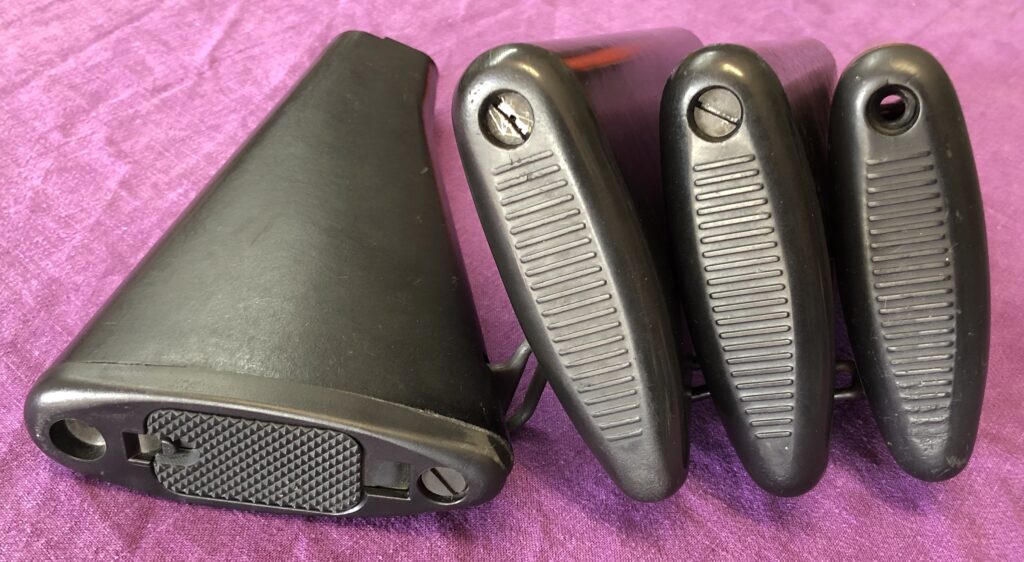
It is tempting to see the addition of a butt-trap as simply a change in keeping with tradition—indeed, every U.S. military rifle issued since the adoption of the Springfield Model 1892 (Krag–Jørgensen) had featured cleaning tools or supplies housed in the buttstock. The problem was more fundamental than this, however. Soldiers and Marines fighting in the Vietnam War were often issued rifles without cleaning gear of any kind. Combined with other teething issues, this contributed to failures under field conditions. Interestingly, with the passage of time, the butt-trap was put to an entirely different use. As M16 (and semi-automatic-only AR-15) rifles were accepted into official use in U.S. National Rifle Matches, competitors modified their rifles with the addition of weighted fore-ends and, later, heavy ‘match-profile’ barrels. In order to restore balance to the rifle for long-range off-hand (standing) shots, competitors sometimes filled the butt compartment of the rifle with cast-lead weights (see Figure 1.5).

The differing weights of the various Types is notable. Examples weighed by the author indicated a nominal mass of 285 g (10.05 oz) for the Type A, 280 g (9.88 oz) for the Type C, 340 g (12.00 oz) for the Type D, and 375 g (13.23 oz) for the Type E. The noticeable change in weight from the Types A–C to the Types D and E may account for some of the reports of rifles not matching nominal weights in the literature. When the author received his first AR-15 in the early 1980s, for example, he was puzzled to find it was a little heavier than military manuals stated. It seems likely that this was—at least in part—a result of the changes to buttstock manufacturing techniques and materials outline above. As the weapon saw increasing use after its introduction, deficiencies were corrected by incorporating more robust furniture, however the mass specification was not updated in newer manuals. The same design changes are likely to have influenced fore-end assemblies, which are also known to have been updated and made stronger—likely adding to the total weight of these updated, but still early, guns.
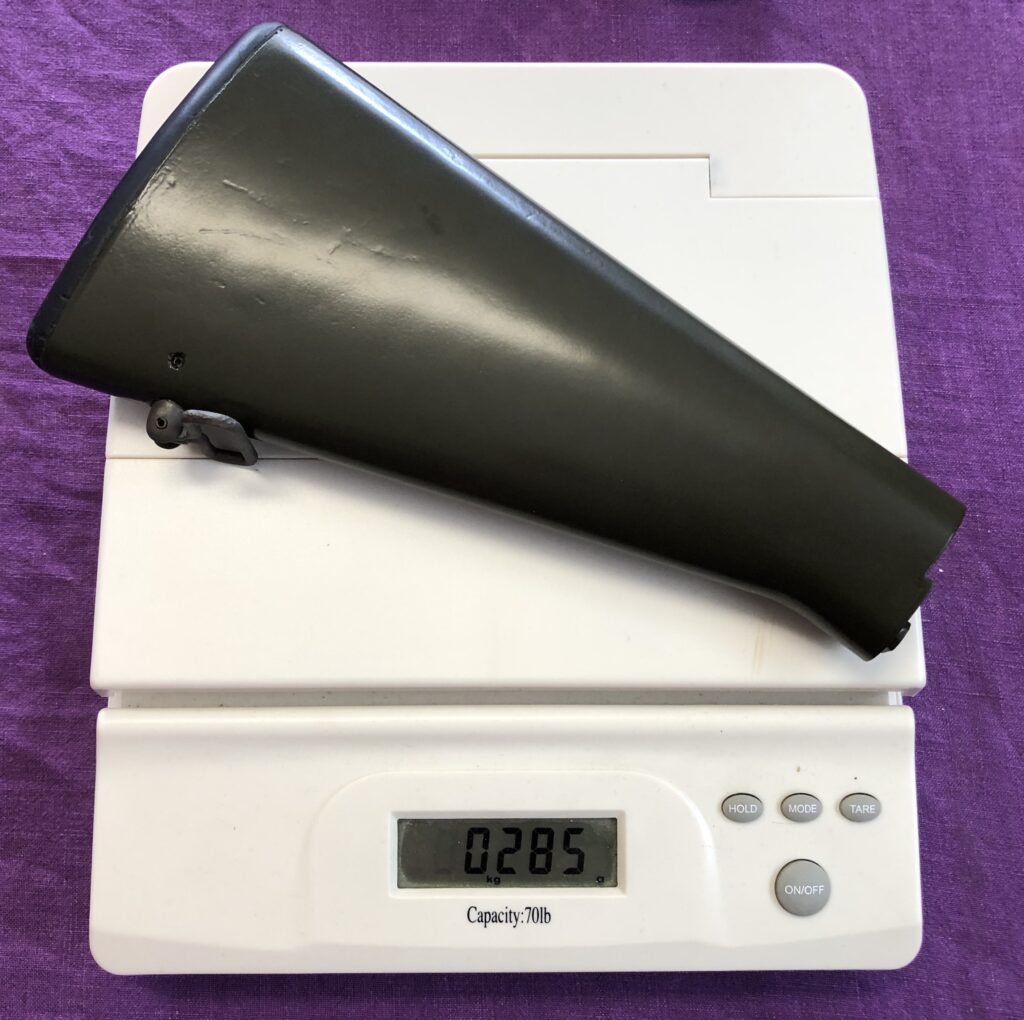
Type A 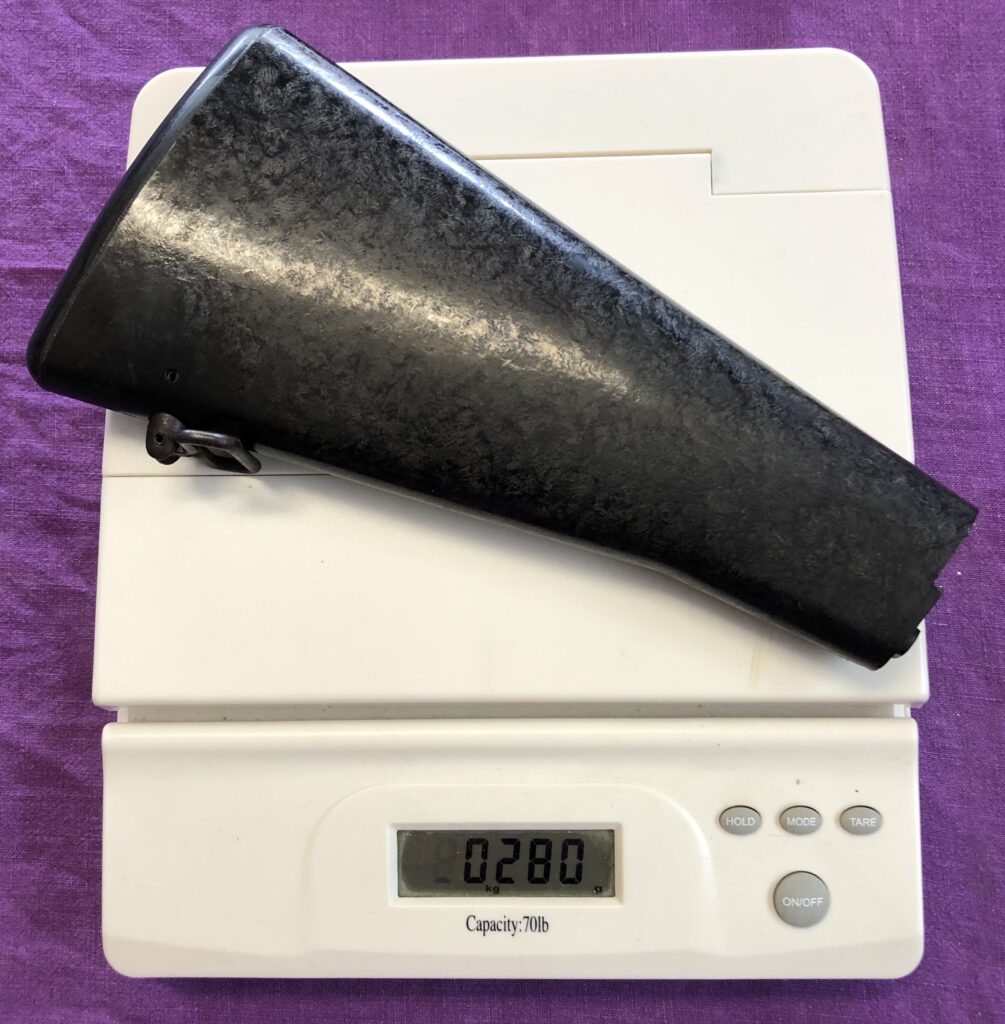
Type C 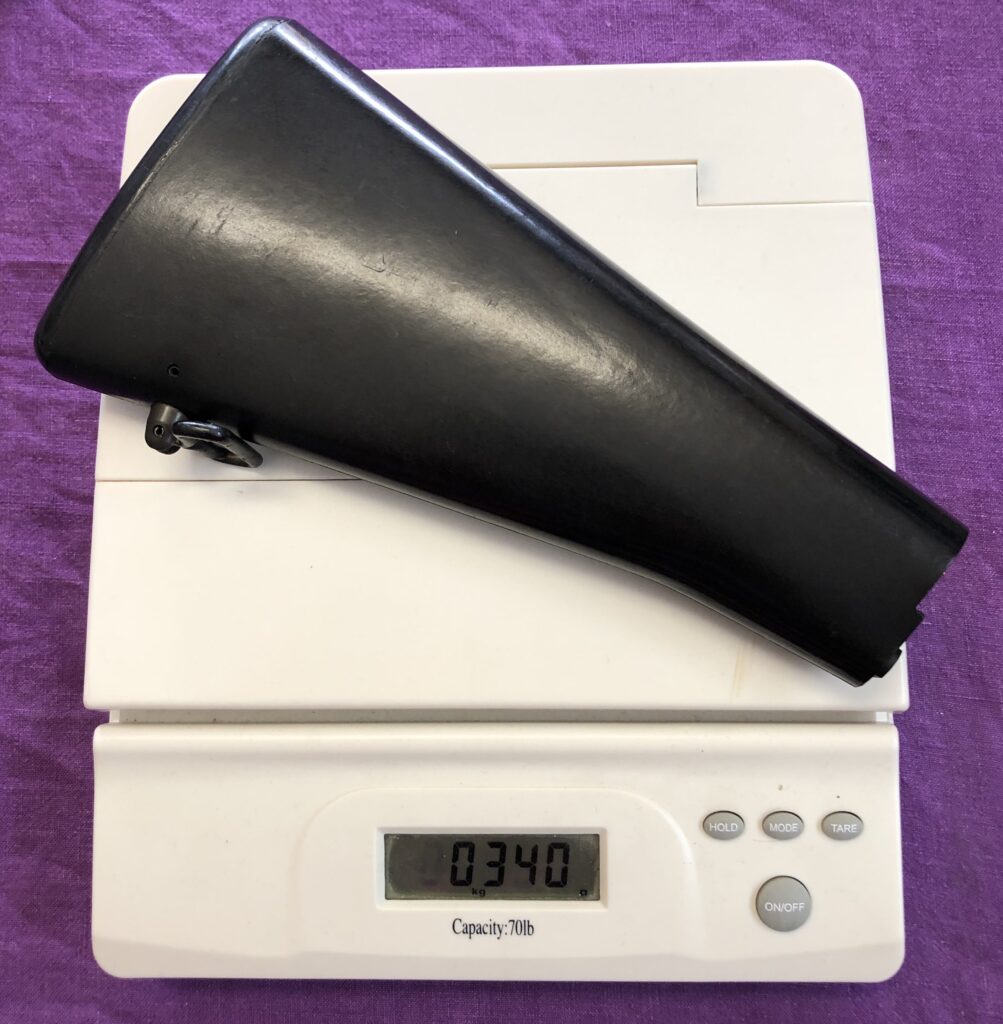
Type D 
Type E
Remember, all arms and munitions are dangerous. Treat all firearms as if they are loaded, and all munitions as if they are live, until you have personally confirmed otherwise. If you do not have specialist knowledge, never assume that arms or munitions are safe to handle until they have been inspected by a subject matter specialist. You should not approach, handle, move, operate, or modify arms and munitions unless explicitly trained to do so. If you encounter any unexploded ordnance (UXO) or explosive remnants of war (ERW), always remember the ‘ARMS’ acronym:
AVOID the area
RECORD all relevant information
MARK the area from a safe distance to warn others
SEEK assistance from the relevant authorities

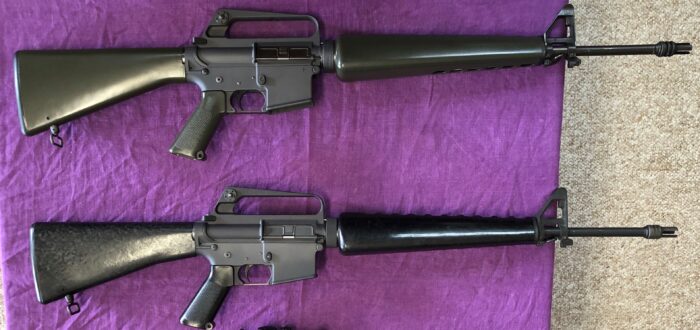
4 thoughts on “Variations in Early AR-15/M16 Rifle Buttstocks”